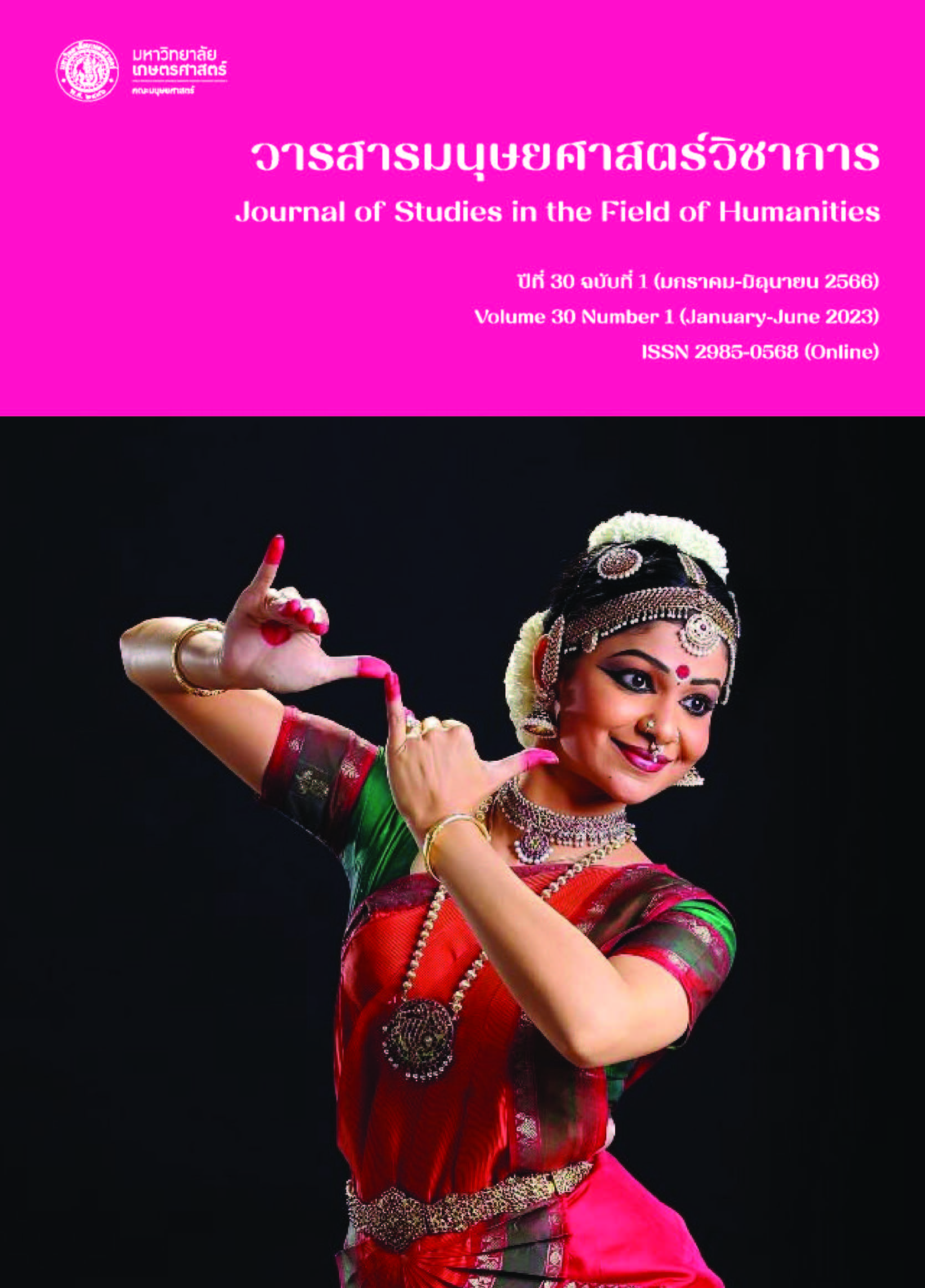The Representation of Women in Confucian Society in South Korean Advertisements
Main Article Content
Abstract
This research aimed at examining and analyzing the persistence or change of women’s representation according to Confucian norms in 190 South Korean advertisements uploaded to Youtube in 2020. The study revealed the persistence or change of women’s representation according to Confucian norms as follows: No.1) Women must be humble and obedient to men because men are the patriarch of the family. Thus, women have to rely on men in their family: young women rely on fathers; married women rely on husbands; and when their husbands pass away, they rely on sons. The analysis of this research revealed that the change of women’s representations was distinctive, based on the results of actresses who appeared in the advertisements as well as the results of advertisements categorized by product or service. No.2) Women’s gender roles are good mother and wife. They have to serve all family members and accomplish all household chores effectively. The results can be revealed from advertisements categorized by product or service as well as female-related activities appeared in commercial advertising. No.3) Women must be perfect both mentally and physically, as reflected in women’s representation from the analysis in advertisements categorized by product or service as well as female-related activities appeared in commercial advertising. In conclusion, women’s representation in South Korean commercial advertisements in 2020 can be divided into 4 categories as follows: 1) The representation of independent women 2) The representation of health-conscious women 3) the representation of beauty-conscious women, and 4) the representation of the ideal housewife.
Article Details

This work is licensed under a Creative Commons Attribution-NonCommercial-NoDerivatives 4.0 International License.
References
ดำรงค์ ฐานดี. (2550). ผู้หญิงในสังคมเกาหลี. วารสารเสนาธิปัตย์ สถาบันทหารบกชั้นสูง, 56(1), 122-132.
ปุญชิดา แสนพิทักษ์, ปัญจณัฐฎา พลายชนะ, เพ็ญพิชชา สร้างเมือง และสุธีภัทร ศรีพล. (2563). การนำเสนอความเป็นชายผ่านสื่อโฆษณาโทรทัศน์ของประเทศเกาหลีใต้ในปัจจุบัน. วารสารภาษาและวัฒนธรรมเกาหลีศึกษา, 2(1), 132-152.
พจนานุกรมสำหรับผู้เรียนภาษาเกาหลี-ไทย. จากสถาบันภาษาเกาหลีแห่งชาติ (국립국어원 한국어-타이어 학습사전). สืบค้นเมื่อ 11 ตุลาคม 2565 จาก https://krdict.korean.go.kr/tha/dicSearch/search?nation=tha&nationCode=3&ParaWordNo=&mainSearchWord=몰.
พจนานุกรมสำหรับผู้เรียนภาษาภาษาอังกฤษ-ไทย. จากสำนักพิมพ์มหาวิทยาลัยเคมบริดจ์ Cambridge Dictionary, Cambridge University Press. สืบค้นเมื่อ 11 ตุลาคม 2565 จากhttps://dictionary.cambridge.org/dictionary/english-thai/camera.
รัญวรัชญ์ พูลศรี, ปพนพัชร์ กอบศิริธีร์วรา, พิสิฐ อำนวยเงินตรา และลลิดา วิษณุวงศ์. (2563). ขงจื๊อนิยมและอิทธิพลต่อสตรีในเกาหลีและเวียดนาม. วารสารจีนศึกษา มหาวิทยาลัยเกษตรศาสตร์, 13(2), 397-420.
วิเชียร อินทะสี. (2561). เกาหลีในช่วงอลหม่าน ค.ศ. 1864-1953: การรุกรานจากต่างชาติ การตกเป็นอาณานิคมการแบ่งแยกและสงครามเกาหลี. พิษณุโลก: มหาวิทยาลัยนเรศวร.
วิลาสินี พนานครทรัพย์. (2560). พลวัตของครอบครัวและบทบาทผู้หญิงเกาหลีในสังคมเกาหลีใต้. ใน นภดล ชาติประเสริฐ (บ.ก.), เกาหลีปัจจุบัน Korea Today (น. 299-342). ปทุมธานี: มหาวิทยาลัยธรรมศาสตร์.
Barthel, D. (1988). Gender and Advertising. Philadelphia: Temple University Press.
Han, Hee-sook. (2004). Women’s Life during the Choson Dynasty. International Journal of Korean History, 6(1), 113-160.
Lee, Janghyuk, & Briley, D. (2005). Repeat exposure effects of internet advertising, HEC Research Papers Series 809, HEC Paris.
Park, Insook Han, & Cho, Lee-Jay. (1995). Confucianism and the Korean Family. Journal of Comparative Family Studies, 26(1), 117-134.
Prieler, M. (2012). Gender Representation in a Confucian Society: South Korean Television Advertisements. Asia Women, 28(2), 1-26.
The Economic Times. (2022). What is Advertising. Retrieved August 5, 2022, from https://economictimes.indiatimes.com /definition/advertising.
구자연. (2019). 채만식 소설에 나타난 근대여성주체와 모성의 문제. 국어국문학과 현대문학전공 서울대학교 대학원 석사학위논문.
김상우YTN. (2021). 서울우유, '여성이 젖소로 변하는 광고' 사과문. (2021년 12월 9일) 출처https://www.ytn.co.kr/_ln/0102 _202112091012544231 .
김순기, 홍종배. (2014). 2000년대 한국텔레미전드라마에 나타난 여성상 연구. 지역과 컴뮤니케이션, 18(2), 25-55.
이경재. (2012). 한국전쟁기 소설에 나타난 여성 표상 연구. 한국현대문학연구 숭실대학교 석사학위논문.
정진숙. (2011). 여성영웅소설에 나타난 여성 인문의 사회적 •이념전 의미 연구. 한양대학교 석사학위논문.

